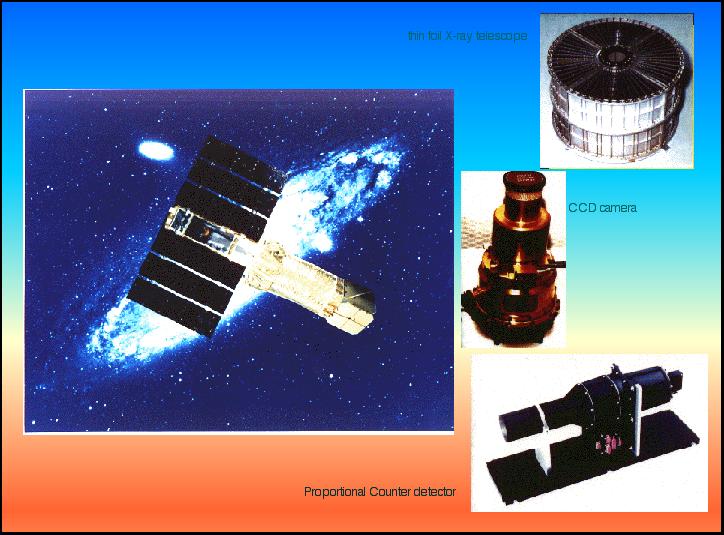
 Credit: ISAS/NASA/ASCA Team
Credit: ISAS/NASA/ASCA Team
Return of the Flying Bird
ASCA, the Advanced Satellite for
Cosmology and Astrophysics, was the fourth Japanese cosmic X-ray astronomy
mission, and the second for which the United States provided part of the
science payload. The name ASCA was given to the satellite after launch in
1993; the name was chosen since it sounds like Asuka, an ancient
Japanese word meaning a flying bird. As shown in the picture above, the
satellite with its long telescope housing and the extended solar panels do
look like certain birds. The ASCA observatory was incredibly successful an
boasted a number of technological and scientific "firsts". The ASCA
observatory marked the first large-scale use of CCD detectors in X-ray
astronomy, and the first long-term use of lightweight thin foil optics for
bringing the X-rays to focus. Among the science highlights: measuring
emission from material about to take the final
plunge into a black hole; discovery of "middleweight"
black holes; proof that supernova
remnants can produce cosmic rays; and measurement of the chemical
makeup of stars and galaxies. After 8 productive years in orbit, ASCA
re-entered the atmosphere at 05:21 UT on March 2, 2001 over the western
Pacific, at 8.2 degrees S and 163.2 degrees E.
Last Week *
HEA Dictionary * Archive
* Search HEAPOW
* Education
Each week the HEASARC
brings you new, exciting and beautiful images from X-ray and Gamma ray
astronomy. Check back each week and be sure to check out the HEAPOW archive!
Page Author: Dr. Michael F.
Corcoran
Last modified March 5, 2001


